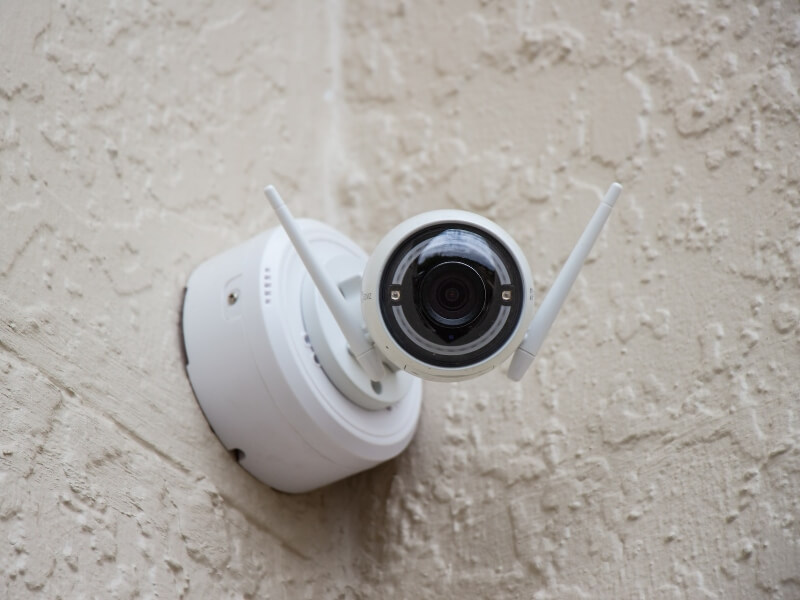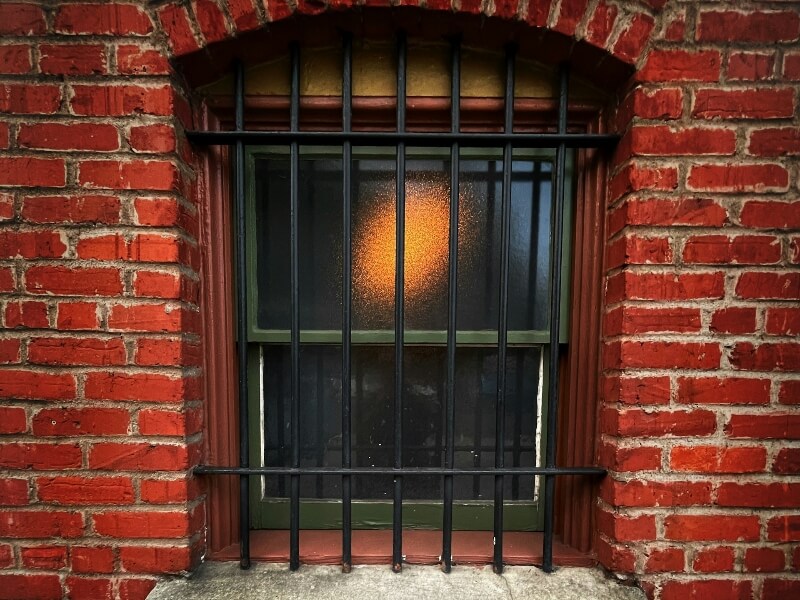Home security is essential for your family’s peace of mind, so survivalists should explore different ways to protect what they value most. Responding to intruders typically includes alarm systems and even, at times, physical combat.
However, you can also implement passive approaches to safeguard your property. Here are some passive and active security strategies to alert you to intruders.
What Passive Strategies Will Alert You to Intruders?
Taking on home invaders is impossible if you’re not home, so you need passive security approaches to increase protection. These methods don’t require direct intervention and are more for documentation or deterrence.
Here are three passive strategies you should implement to stop intruders.
1. Security Cameras

One of the best ways to document intruders is to use security cameras. Passive strategies call for video surveillance without your intervention — in fact, you might not know when the break-in occurs. However, a simple surveillance camera will gather the footage you need.
These devices are best for safehouses and similar facilities you don’t need to monitor continuously. If you notice something suspicious, you can check the footage.
Scouring through hours of footage can be tedious, so survivalists should consider a motion sensor camera if they want to save time. These devices only begin filming after detecting movement, letting you see the most important recordings.
This feature also saves energy, allowing you to allocate money for other security measures.
2. Window Bars

Windows are a typical target for intruders because they can break easier than other entry points, such as doors. While noisy, shattering windows give quick access to bedrooms and other places with valuables. How can you deter thieves and protect your windows?
Adding window bars is a typical passive security measure because they’re not easily breakable. Intruders seek minimal resistance during break-ins, so these devices add extra protection for your family. Look for ones made of steel due to its strength. Stainless steel has up to 1,600 megapascals (MPa) of strength, ensuring deterrence for your windows.
3. Security Film
Another way to protect your windows is by adding security film. This passive security measure keeps your glass intact even when intruders attempt to smash it with their tools. If a thief can’t break the window, they’ll move on and try something else or exit the area entirely.
Window film also provides deterrence by making your interior less visible, thanks to its reflective properties. Survivalists in sunny areas will get plenty of use from this security device.
While security film is an intruder deterrent, this gadget also improves a building’s energy efficiency. High-quality security film reflects sunlight, minimizing the ultraviolet (UV) rays entering your home and reducing the heat gain in your windows.
The Department of Energy says window treatments conserve energy in the summer, making security film a versatile tool you need for survival.
What Active Strategies Will Alert You to Intruders?
While deterrence and documentation are necessary, you may need to intervene and fend off the intruders. These three active strategies assist in alerting you to intruders.
1. Alarms
Alarms are among the most effective active security measures because they’re loud and send an immediate message to intruders. Automatic sensors are excellent tools because they will sound when a thief breaches the premises, and you don’t need to press a button.
However, you can use manual alarms if you would rather put the system in your hands. These devices are just as capable of home security as your standard automatic version.
While technology makes for solid alarms, you should explore options that don’t require a battery or a Wi-Fi signal. Intruders may plan their attack during widespread power and internet outages, so consider perimeter alarms like dogs or trip wires with a primer charge. Dogs provide excellent security even when you’re away because they draw attention and can be aggressive enough to take on intruders.
2. Window Break Sensors

Windows are typically passive security devices because they deter intruders, but you can make them active by adding technology. An intruder trying to break the window could set off an alarm and notify your smartphone, even if you’re away from home. From here, you can contact the authorities or handle business yourself.
Break sensors are one example of window security technology. These gadgets upgrade the average security system when paired with motion detectors and cameras to provide excellent protection. Window break sensors use microphones to detect breaking glass and are intelligent enough to differentiate between breaking and an object simply hitting the glass. Once the glass shatters, the sensor sets off the alarm to deter intruders.
3. Drones

Drones are the next big thing in the tech world, with companies using them for shipping and farmers implementing them for spraying crops. While they can be expensive, drones are an excellent active security tactic if you have a large property.
All you need to do is deploy the drone from your vantage point and send it to the area you want to monitor. When speed is necessary, a drone can be a terrific security device because you can integrate it with your current security system. Many drones operate autonomously, adding some passive elements to this active security measure.
Before deploying your device, knowing where you can fly drones is essential. Most residential properties are safe because it’s your private land. However, privacy laws still apply to drones, so don’t encroach on your neighbor’s property with your device. National parks, sports stadiums and government buildings are examples of locations forbidding drones.
Varying Security Strategies for Your Property
There isn’t a one-size-fits-all approach to security, so choose which techniques make the most sense for your home. Some survivalists may enjoy active strategies, whereas others prefer the passive approaches. Regardless, investing time in your security is wise for long-term safety.
